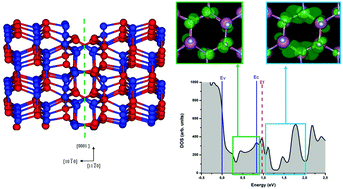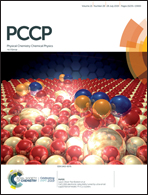Core properties and the role of screw dislocations in the bulk n-type conductivity in InN†
Abstract
First principles calculations, based on density functional theory, have been carried out to investigate the role of screw dislocations in the bulk n-type conductivity which is usually observed in indium nitride. Energetics, atomic and electronic structures of different core configurations of dislocations, running along the [0001] polar or along the [11![[2 with combining macron]](https://www.rsc.org/images/entities/char_0032_0304.gif) 0] non-polar direction, have been determined and compared. This enabled inspection of the modifications in the properties of screw dislocations when the growth direction is changed. For the c-type screw dislocation, the configuration with a double 6-atom ring, involving wrong bonds was revealed as a ground state configuration, and for the a-type screw dislocation, the shuffle configuration was found to be energetically favoured over glide ones. Unlike core configurations of the a-type screw dislocation, those of the c-type screw dislocation have their Fermi levels pinned in the conduction band and thus act as a source of non-intentional n-type conductivity. This demonstrates that eliminating the contribution of screw dislocations to the n-type conductivity can be achieved by growing wurtzite InN along the non-polar direction.
0] non-polar direction, have been determined and compared. This enabled inspection of the modifications in the properties of screw dislocations when the growth direction is changed. For the c-type screw dislocation, the configuration with a double 6-atom ring, involving wrong bonds was revealed as a ground state configuration, and for the a-type screw dislocation, the shuffle configuration was found to be energetically favoured over glide ones. Unlike core configurations of the a-type screw dislocation, those of the c-type screw dislocation have their Fermi levels pinned in the conduction band and thus act as a source of non-intentional n-type conductivity. This demonstrates that eliminating the contribution of screw dislocations to the n-type conductivity can be achieved by growing wurtzite InN along the non-polar direction.



 Please wait while we load your content...
Please wait while we load your content...